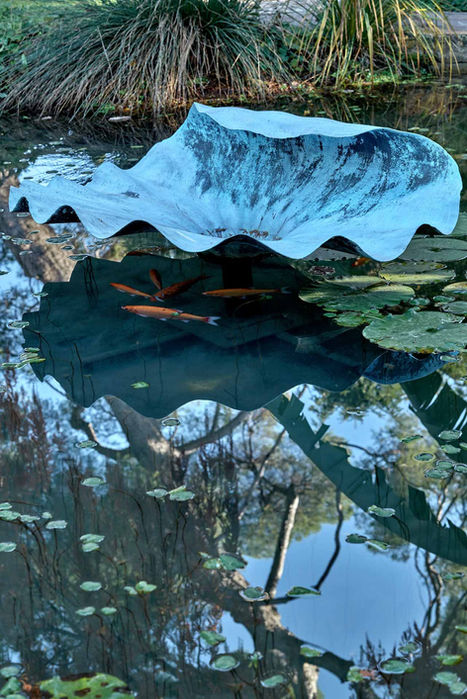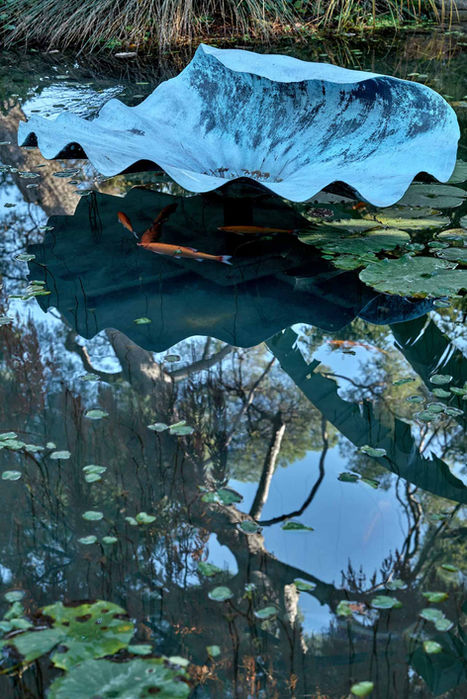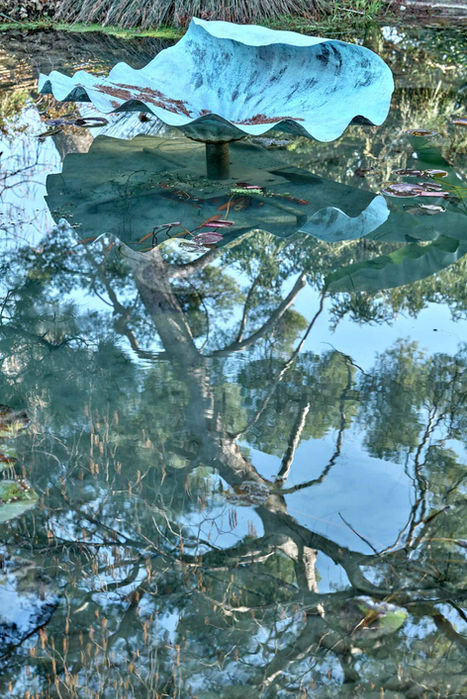Morio Nishimura
Sweet Rain, 2016
Artwork Brief Description
Nishimura’s *Süßer Regen* is a delicately abstract bronze sculpture inspired by the lotus flower, a central motif in his work. Rooted in Buddhist philosophy, the piece symbolizes purity, rebirth, and enlightenment. The title refers to a Buddhist legend in which divine rain falls upon Buddha’s birth, emphasizing spiritual awakening. The sculpture’s unfolding form mimics the lotus’s growth from mud to bloom, paralleling the human journey toward transcendence.







Morio Nishimura was born in 1961 in Kamakura, the small coastal town not far from Tokyo. After studying art at Tama Art University in Tokyo, he came to Germany on a DAAD scholarship in 1991 and continued his studies at the Kunstakademie Düsseldorf as a master student of Prof. Günther Uecker. At the same time, he also worked as a lecturer in the field of fine arts at the University of Mainz. In 2000/2001 Nishimura was artist in residence at the Kunststation St. Peter in Cologne. Nishimura lives and works in Düsseldorf. He has participated in numerous solo and group exhibitions in Germany and abroad, including at the Kunststation St. Peter (2002), at the Museum of Modern Art Kamakura and Hamaya (2005), at the Swiss Triennial of Sculpture - Bad RagARTz, Bad Ragatz and Vaduz (2009 and 2012), at the Mediation Biennale in Poznan/Poland (2012), and at Tamaguchi Fine Art Tokyo (2011/2013).
Morio Nishimura (Japanese b.1960)Süßer Regen (Sweet Rain/Pioggia Dolce), 2016
Süßer Regen is a delicately beautiful sculpture by the esteemed Japanese master of bronze, Morio Nishimura. We see an abstracted lotus leaf, Nishimura’s most favoured motif, unfurl before our eyes. For Nishimura, the lotus is so much more than a mere flower or plant. Instead, it serves as a medium for exploring deeper spiritual and philosophical ideas.
Rooted in his Buddhist heritage, he regards the majestic plants as a profound symbol of purity, rebirth, and ultimate divinity. This interpretation aligns with Buddhist teachings, where the lotus is synonymous with spiritual awakening and enlightenment.
In his depiction of the lotus, Nishimura contemplates the concept of transmigration of souls, the idea of going from one state of existence to another. When interviewed in 2005 at his exhibition at the Museum of Modern Art Kamakura, Nishimura elaborated on these themes when he said,
'I carry the lotus inside me. It often seizes my thoughts as a memory. In an abstract sense, I am in an intense relationship with it, and so it is a part of me'.
⁃ Morio Nishimura
The title, Süßer Regen or Sweet Rain, translates as “Kanro no Ame” in Japanese. It refers to a story in Buddhist scripture when Buddha was born, and the heavenly gods caused drinks to rain down from the sky in the form of flowers. In the ancient Indian Veda, these drinks are called “amanita”. It is said that Buddha meditated before a pond with blooming lotus flowers, and upon seeing them, he resolved his mission. Nishimura gave this series of works this Buddhist title, thereby imparting it with an unmistakable religious meaning.
Just like the lily pads that encircle the sculpture, the lotus begins its life underwater in complete darkness and in thick mud. The denser and dirtier the mud, the greater the effort required for the lotus to reach the light. The more arduous the journey, the more beautiful the bloom will be, serving as a significant metaphor for the human experience.
This sculpture is transformative in every sense. From one perspective, it resembles a conch-like shell floating on the water’s surface, whilst from a distance, it might be mistaken for the tail of a dolphin or whale.
As the viewer moves around the sculpture, its shape gradually unfurls, revealing a new form reminiscent of a scallop shell. It would be impossible not to recall the imagery of Botticelli’s Renaissance masterpiece, the Birth of Venus (Nascita di Venere). Both Venus and the shell serve as quintessential symbols of both purity and life, much like a pearl, epitomising nature's perfection. Just like Venus, in Nishimura’s sculpture, the lotus appears to float on the water’s surface, both embodying a state of transition or rebirth in their apparent weightlessness.
At the base of the sculpture several small lotus leaves are interspersed amongst the lily pads, their undulating leaves closely mirroring the contours of Nishimura’s bronze creation. Unlike Nishimura’s coiled form, these undulating leaves rest flat upon the water’s surface. This contrast highlights the varying states of being and reminds us of the ever-changing nature of existence.